Nursing Supervisors
A unique view across care units
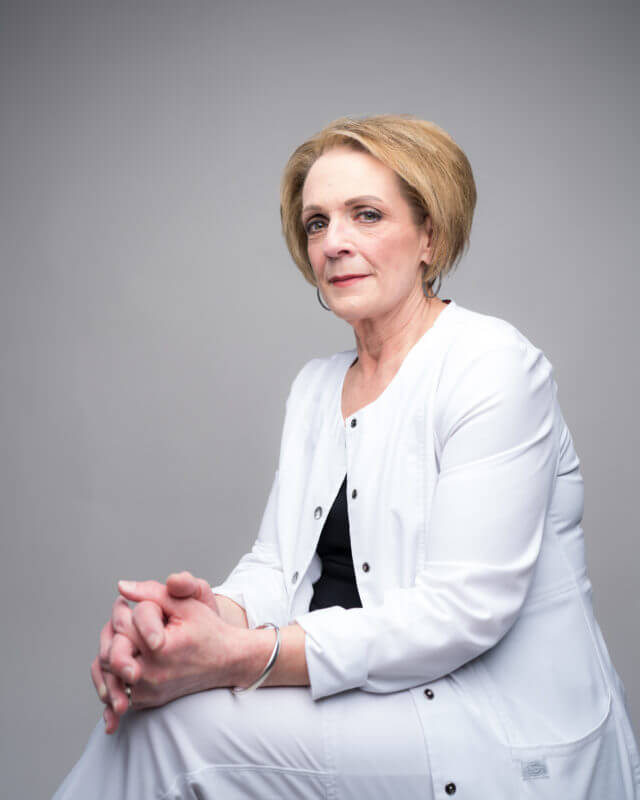
Karen Neis
When Delta hit, that’s when it became so serious that you couldn’t even find a bed to put another patient into. Besides having the normal volume of patients that are coming into the ER that need medical care for heart attacks, strokes, abdominal pains, all those kinds of patients. I’m trying to figure out – am I going to get enough discharges today to be able to get these patients in? We have another COVID patient, but I don’t have another COVID bed – where can I put this patient? I have people from outside facilities having sick intubated COVID patients – they need to come here to a higher level of care. I don’t have a bed. How do we make this happen?
A lot of times we couldn’t get the patients here. And that was heartbreaking for all of us working as supervisors – it was really difficult.
Karen Neis, Administrative Nursing Supervisor
I was on for the first COVID death – a 49 year old. I didn’t have enough staff that night, and I don’t normally work nights, but I stayed on. And that was our very first code. To Skype in a family crying miserably because they’re losing a 49 year old family member to COVID – that was so very difficult. It was so hard. We held the hands of the patient, we were the family that was here with that patient. And we became that family for multiple other patients that died throughout this journey as well. We held the patients’ hands and the families got to watch on cameras as they said their last goodbyes.
I don’t think you can ever imagine what we went through without walking the journey along beside us. You can tell people what it’s like, but they can’t envision it. They have no clue what it was like to be there. And the pain of losing so many people, it was devastating. I’ve been a nurse for 42 years. To experience a pandemic like this was something I never envisioned in my whole entire career. But I’m glad I was part of it. I just want to say how proud I am of this organization, how proud I was to walk the journey that I’ve been on. And my heart will feel it forever.
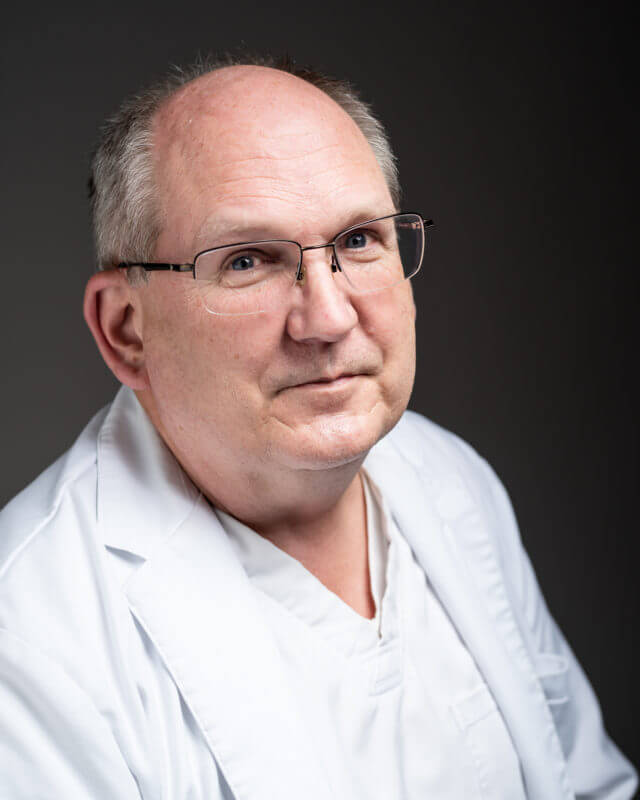
Paul Reisdorf
Someone would come in for a basic procedure, like an endoscopy. And all of a sudden, something would happen, and we’d get a call saying ‘we’re going to keep this patient intubated, because things didn’t go too well, and I need an ICU bed.’ I’d report that we don’t have an ICU bed,’ and they’d ask, ‘What do you mean, you don’t have an ICU bed?’ It’s those kinds of situations all the time. You have to come through; you have to sit there and call the charge nurse and then we would have to see which patient could be moved.
That was the biggest struggle – you never were sure that was going to be the last ICU patient that needed a bed.
Paul Reisdorf, Administrative Nursing Supervisor
So you would give this ICU bed, and then all of a sudden you have a COVID patient that’s that’s on heated high flow and needs to be intubated. Then all of a sudden, there’s two more that pop up – one from the ER, and one from inside the hospital.
Our job is like those thumb puzzles where there’s 12 pieces in there and one piece missing. You take that puzzle, and you have that one spot. So if you have a full ICU and you have to move everybody down to a smaller unit to get people into the ICU – it was our job to make that all happen. It’s like a puzzle, except they’re giving me nine extra pieces to fit into that one space.
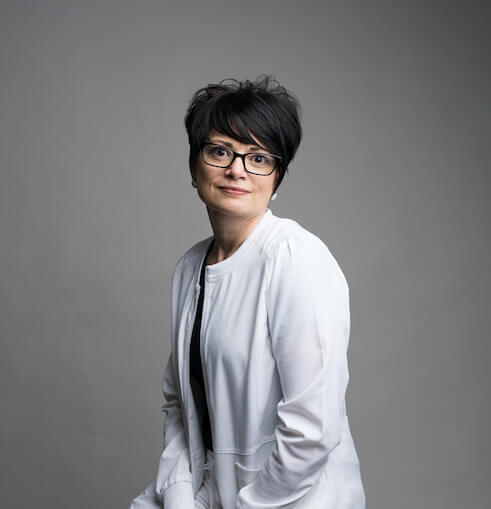
Rolee Petersen
When we are ‘diverting’ a patient, we are telling them there is no bed and that they are going to have to look somewhere else. We have never I don’t think in history ever diverted the amount of patients as we have in the last two years – we have always been able at some point to fit them in. It is really hard to say ‘no’ when you know that you have the facility that they need, the higher level of care, the physician, everything! But you just can’t make it work, because of staffing or because of a bed issue.
Sometimes you just can’t hear yourself say “no” again, because you know that the person on the other end of the line has to go and tell that family that St. Cloud just doesn’t have a bed.
Rolee Petersen, Administrative Nursing Supervisor
We all know that patient sitting in that hospital could easily be one of our own family members. And I think that just speaks volumes to all of us in how hard we work every single day to try and fit every patient into the right bed and get them here for a higher level of care. Whether it be for a cardiac arrest or COVID or a simple surgery like an appendectomy – there are facilities that just are unable to do those things. And if we say no, now they have to hang up with us and now they’re calling the next hospital and the next hospital.
We’ve been putting in so many hours. In the last few years we’ve spent more time at our jobs with our work family than we have with our own family. Sometimes we were in the thick of it so much that we didn’t always realize that things weren’t going well or were falling apart at home. We were trying to do our best by juggling it all. And every day, we would show up for work and dig in again. You just keep going, day after day, you keep coming back and you just try to do your best. How much our staff gives is just absolutely incredible.
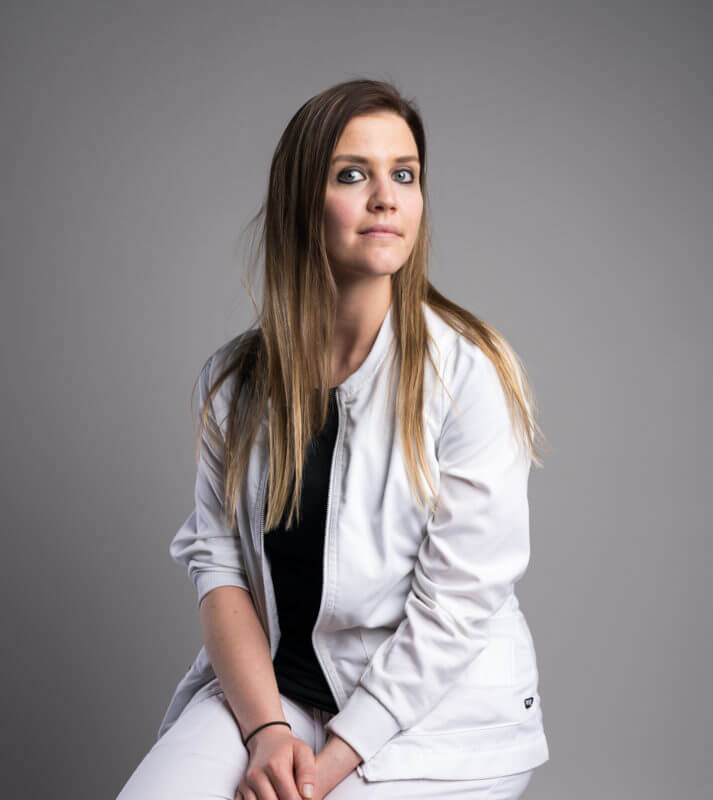
Haley Wipper
The most difficult thing for me personally has been being at the bedside of that patient where there’s no other choice but to be intubated. Knowing their chances of making it through this, and having that conversation with them to encourage them to make that call to their family – knowing that it might very well be the last call that they make to their family – was really hard.
If there’s anything positive that came out of this, it was the teamwork and the strength that we all got from this.
We’ve all kind of bonded over Paul Reisdorf’s ‘vision wall.’ It was just a very negative time, given everything that we’ve gone through, so he made this ‘Envision 2022’ wall and it’s filled with positive things to look forward to. So we all contributed to that. For example, we have a picture of our office, which is very small. We want to hopefully knock down a wall and make it bigger, so we have the blueprint of that up there. We have some positive sayings, quotes from people, maybe a unicorn, some nice notes that we’ve gotten from units to the nursing supervisors – just anything positive. It’s great.
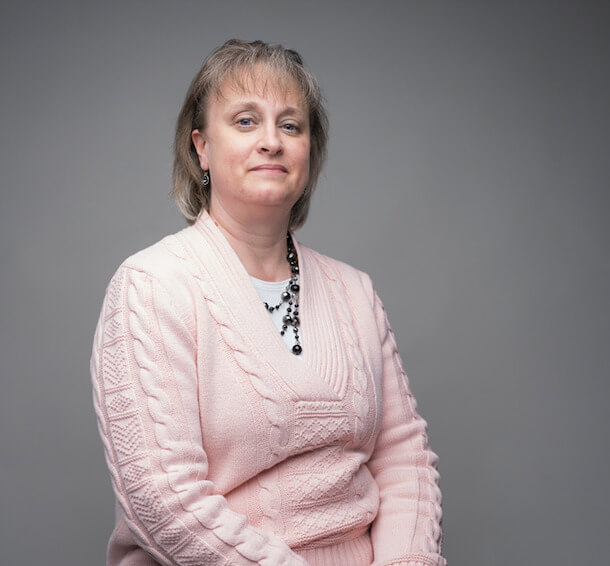
Jen Seifert
Delta is the reason why we had to turn patients away. And patients died – lots of patients died. They were just so, so sick. And I think the reason Delta was so hard is because it could have been mitigated by vaccinations and most patients in the hospital for Delta were not vaccinated.
They were just so, so sick.
Jen Seifert, Director, Patient Care Support
The first go round, the community was all in – they really were supportive of health care in general. We’re going to do it together, we’re there with you, that kind of thing. And that really tapered off last summer. Then the Delta variant hit and there was zero community support. The public was sick of wearing mask and didn’t want to social distance. They wanted to go out for dinner and do all that good stuff that makes life worth living. I get it! But it landed so many people in the hospital and that’s just very, very difficult.
We learned to be adaptive and flexible, and really how to turn on a dime. COVID, for all of the awfulness that it was, has taught us that we can do things we didn’t think we could do. And we can do them pretty quickly if we really need to. And so it stretched us quite a bit. If there’s a silver lining, I think it’s that we’ve learned to stretch and have gotten a little more comfortable doing that.


I’m so proud to be part of this organization.